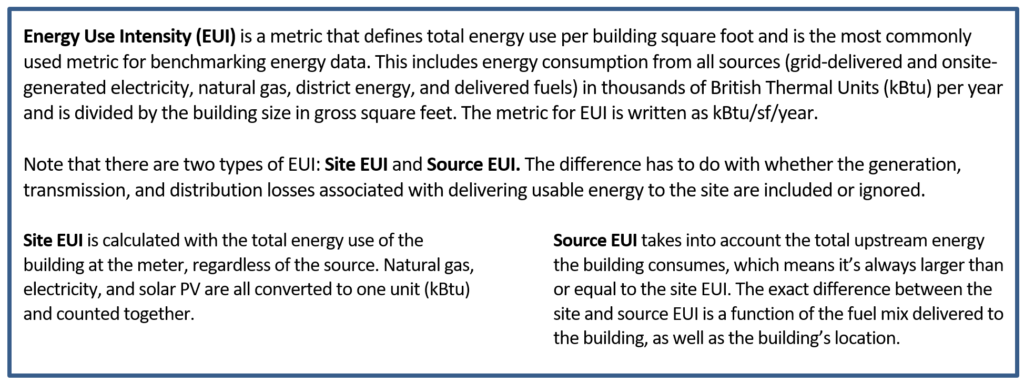Public Building Benchmarking Guidance
Benchmarking, Retrofits
Benchmarking is the process of accounting for and tracking a metered building’s current energy performance over time. Benchmarking allows for comparison of a building’s current and past performance as well as comparison to similar buildings. Benchmarking is useful to control performance drift, track energy consumption and utility spending, and recognize top performers.
Fundamentally, building energy benchmarking involves tracking a building’s energy performance over time, including grid-purchased electricity, onsite renewable generation, natural gas, district energy, and delivered fuels. Municipalities, state agencies, school districts, building owners and other portfolio holders benchmark facilities to better understand their building stock, identify operational opportunities, and control performance drift. This can be done for individual buildings or for a portfolio of buildings to compare energy use or gauge performance in the marketplace. Non-building assets, such as wastewater treatment and water filtration plants, airports, swimming pools, and streetlights, can also benefit from benchmarking. See “Learn More” in the right sidebar for further guidance on the energy impacts of these process-driven facilities.
Tracking building energy use over time can help identify the impacts of operational changes such as HVAC and lighting control changes, capital improvements, and maintenance work. Buildings benchmarked over a three-year period showed an average of 2.4% annual energy savings, according to information from the US EPA ENERGY STAR® Portfolio Manager™ (ESPM) program.
A variety of tools are available on the market for energy tracking and benchmarking. Energy Star Portfolio Manager is a widely used free tool that can be used to track data, generate reports, set goals, and effectively overview any number of buildings across different building types. Tracking with ESPM can extend beyond energy to water, waste and greenhouse gas emissions (although not, as of 2018, streetlights). Commercial buildings in cities with disclosure ordinances typically mandate ESPM to report and track energy consumption.
The resources in the sidebar can assist you at any step of your benchmarking journey, whether you are deciding which benchmarking tool to use, evaluating your building stock, or comparing your energy use across a portfolio.
Last Updated January 2019

